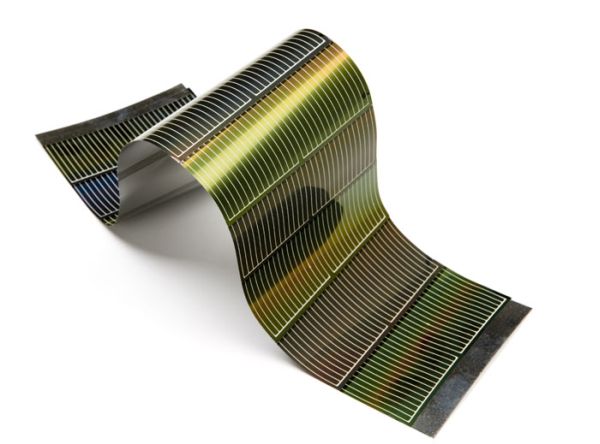
Flexible solar panels came with a solution to the most basic need of humans, i.e. mobility. Imagine what would happen if your car broke down late night on a deserted Broadway, and you notice that your phone is discharged. How would you call someone for help? Necessities arise out of the need for convenience. Flexible solar panels have arrived as a boon to the modern world where everything runs on charge. These solar panels are flexible, and have hence, found great use today. They are portable and can be folded and carried to any place you want to take them. They can be used for digi-cams, laptops, phones, mp3 players and several other gadgets that we use in our day-to-day life. In addition, they come in various sizes from 5W to 50W. Add to them the advantage of cost effectiveness and they feature on top of the list.
The good:
Portability
What makes a flexible solar panel so addictive is their ability to convert renewable source of energy into a form that can be used by us. This ability of these solar panels makes them extremely useful during travels, tours, and expeditions. It is a stable source for alternative energy. Highly portable, light in weight, and small in size, these can be used to charge gadgets like iPods and mobile phones. These flexible solar panels are waterproof, which further increases their utility. Their flexibility has found them abundant usage in residential and commercial construction. Since they are portable, they can also be used in vehicles.
Can this be better?
With more research, they are bound to get smaller, lighter, and more flexible. Their efficiency will increase. Currently, flexible solar panels suffer from the disadvantage of transfer inefficiency, which is less than 10 percent.
The bad:
Efficiency
The old counterparts of flexible solar panels, though immobile, had transfer efficiency of approximately 20 percent. The flexible solar panels come with a severe disadvantage of low transfer efficiency. Their transfer efficiency is less than 10 percent that means they cannot convert even half the amount of solar energy into the electricity like the rigid solar panel. This mars their advantage of mobility to some extent.
Can this be avoided?
With innovation taking place at a rapid pace and technology striding ahead, there are mammoth chances of improvement in transfer efficiency of flexible solar panels. Near future may see enhanced capability of flexible solar panels to trap more energy and power gadgets.
The ugly:
Power output
Flexible solar panels suffer from the serious drawback of low power output. Its efficiency is very low (less that 10 percent) and the energy generation from solar energy is highly reduced.
Then, the issue of sunlight variations affects it. The amount of power produced by a flexible solar panel is dependent on the intensity of sunlight and the duration for which it is exposed. That means, if not exposed properly, the power output will be considerably low. In addition, their capacity to produce energy degrades within 5-7 years of usage. This is significantly lower than silicon solar panels.
Why are we so critical?
The flexible solar panels make use of solar energy to generate energy. Hence, in bad weather conditions, like hail, rain, storm, these solar panels will fail to charge and produce output.
The Bottom-line:
Despite a few serious drawbacks of flexible solar panels, they are bound to flourish in the market. They have been put to great use and will be put to more use in time to come. It is expected that technology will fade away its drawback and their transfer efficiency and power output will increase. Besides, they are very cost effective and many of them cost nearly one-fourth the cost of static solar panels or photovoltaic cells. The coming times might see laptop batteries enhanced longevity with flexible solar panels put to use wherever you are.



